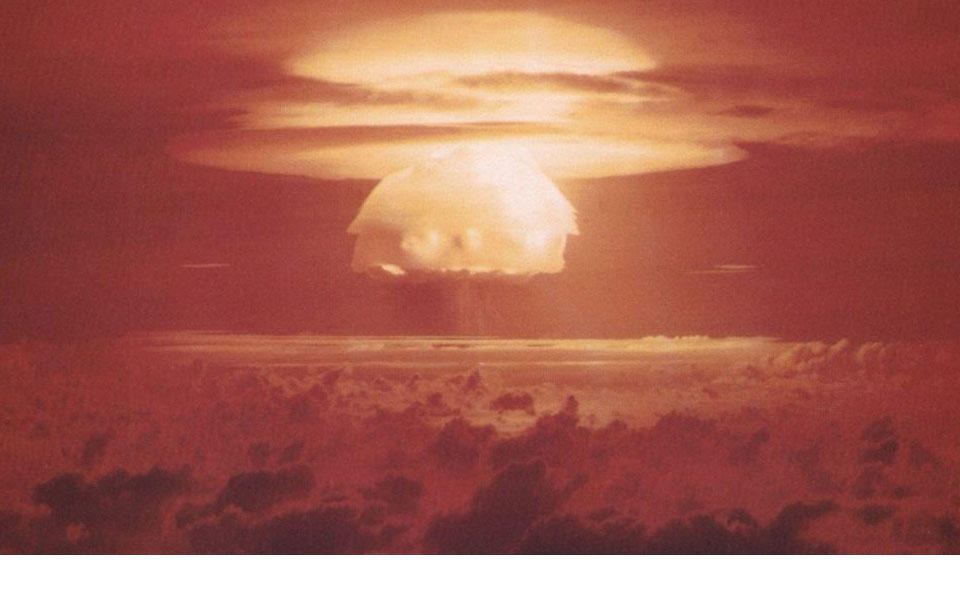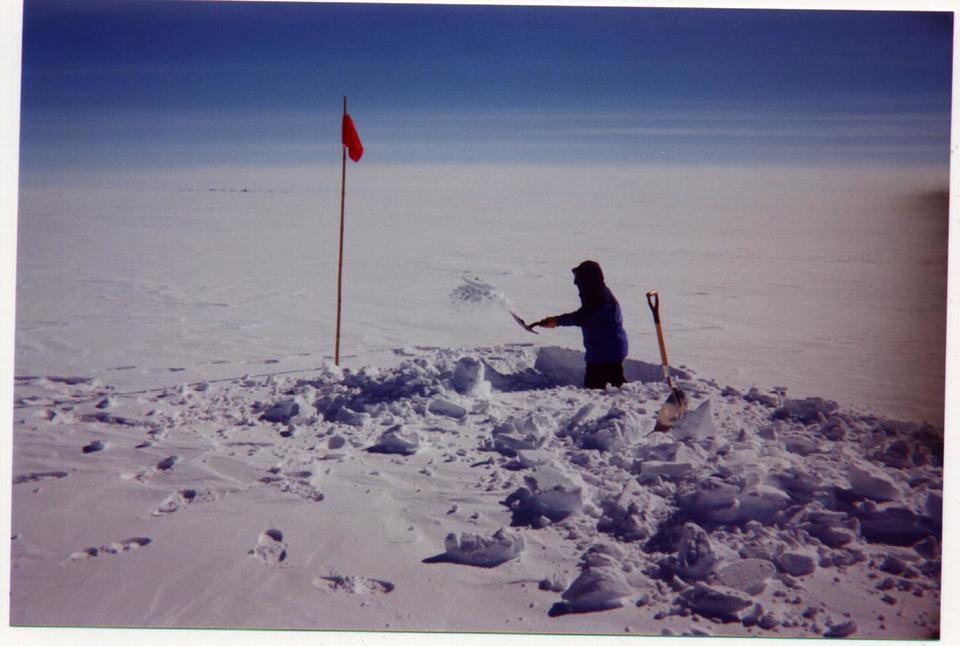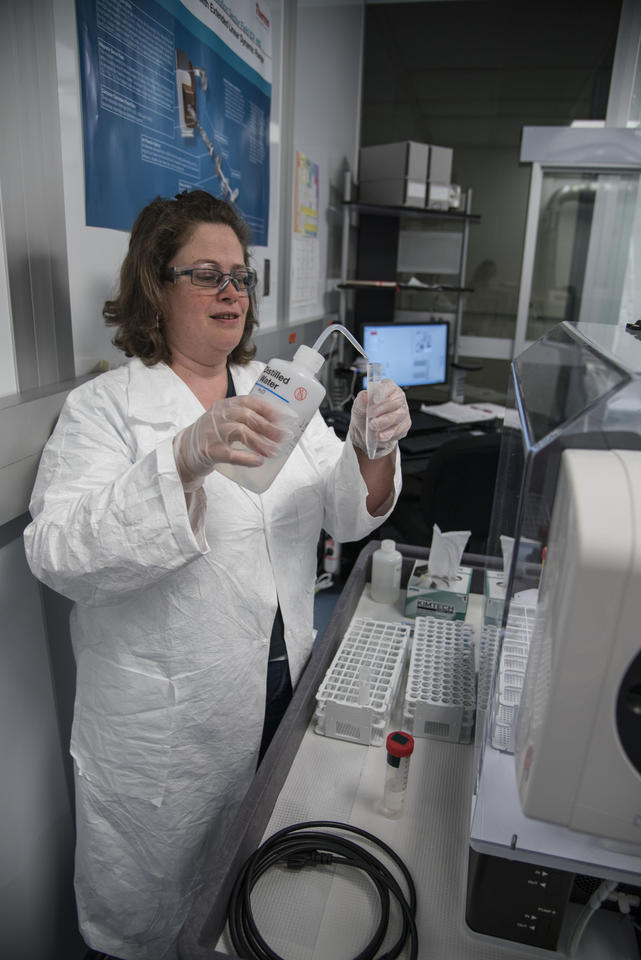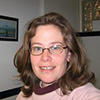Taking Measure
Just a Standard Blog

Nuclear weapon test, March 1, 1954, on Bikini Atoll.
Legwarmers, preppies, yuppies, Molly Ringwald, nuclear paranoia … the 1980s were my favorite decade. I was in junior high school in New Jersey when I saw The Day After, a 1983 TV movie that depicted a nuclear war between the United States and the Soviet Union. The focus of the movie, however, was not on the war but rather on the impact that the nuclear exchange had on everyday people. I remember watching the movie with my parents, being very scared, and thinking “Could this really happen?”
Little did I know that 33 years later a series of interconnected events would have me answering related questions in nuclear forensics.
In high school, I became interested in political science and international relations and took an elective class on international affairs. With the help of one of my favorite teachers, (Mrs. Ramsden, if you’re reading this, hi!) the class kick-started my curiosity in the political arena.
Soon after I took that class, I became involved in the Model United Nations, an educational simulation where students learn about diplomacy, international relations, and, well, the United Nations. Over my “career” in the Model UN, I had the opportunity to represent countries such as Cameroon, Iraq, and Israel, but for my final year I got the most coveted of all positions: the delegate to the First Committee representing one of the most powerful nations in the world—Russia.
The First Committee deals with disarmament, global challenges, and threats to peace that affect the international community and seeks solutions to the challenges in the international security regime. As the Russian delegate one year after the fall of the Berlin Wall, I could capitalize on the new political dynamic. I was able to align with the U.S. and western European nations to write numerous resolutions to reduce the stockpiles of chemical, biological, and most importantly in my eyes, nuclear weapons.
While my college major was in government, I had decided by the end of my sophomore year to minor in geology because I also wanted to understand the planet we live on and learn all the mysteries that could be unraveled from scrutinizing one rock. I love mysteries and have been an avid reader of mystery books starting with The Hardy Boys, so discovering the mysteries buried in rocks made sense.
By the end of the next year I had such a passion for science that I knew I was going on to graduate school to focus on geology instead of politics. This new focus got me a M.S. in geology and, later, also a Ph.D.

I had my first exposure to NIST back in 1997 when I began my M.S. research on how the sulfur cycle in regional Maryland coastal plain watersheds reacts seasonally. NIST had some of the world’s experts in sulfur measurements; I needed assistance making sulfur measurements of very small samples; and so, naturally, I visited NIST. By coincidence NIST needed someone to assist in the certification of the sulfur concentrations in fossil fuel Standard Reference Materials (SRMs). These SRMs are used by, for example, the coal industry for the calibration and validation of the instruments they use to measure the amount of sulfur in coal, which is something we want less of because it causes acid rain.
So, of course, I took my first job at NIST that same year!
While trekking back and forth from NIST to school, I also learned skills that helped my Ph.D. research on the global sulfur cycle. For that project, I measured the chemical variants of the element sulfur, known as isotopes, in samples I took from snow pits I dug on top of the Greenland ice sheet. With daily temperatures hovering around -17 °C (1.4 °F), I spent two weeks on that massive glacier collecting the samples I needed. It’s not every day you can get to the top of the Greenland ice sheet, so these were very precious, one-of-a-kind samples to say the least! My job was to measure the very low sulfur concentrations in these samples to examine the seasonal shifts in the sulfur isotopes. I developed a measurement method that could measure microgram quantities of sulfur, which was previously not possible, and learned—no matter the season—that human society is the dominant source of sulfur to Greenland.
Five years ago, I went from working with very cold (you could say “icy”) samples to very “hot” ones when I started developing SRMs and Reference Materials (RMs) for nuclear forensics.

Nuclear forensics is the analysis of samples seized by police from illegal activity or transport, collected from a nuclear facility or after the detonation of an improvised nuclear or radiological dispersal device, aka a “dirty bomb,” to determine the physical, chemical, elemental and isotopic characteristics of an unknown nuclear or radiological material. This data can provide information on the weapon design, the fissile material (uranium, plutonium, etc.) used, the kind of reactor that produced the material, where the material was made or mined, the material’s age and chemical makeup, and if the material was recycled from older nuclear weapon stockpiles or fuel.
Investigators commingle the data gathered from nuclear forensics measurements with intelligence and law enforcement data to track down possible suspects. NIST reference materials are there to help investigators establish the traceability, accuracy, and precision of these measurements so that prosecutors can confidently use that data in a courtroom to try the defendants.
One of the most interesting projects I’m working on now is the characterization and certification of NIST’s first “post-detonation” reference materials to support nuclear forensics measurements. In collaboration with the U.K.’s National Physical Laboratory and the FBI we are developing SRMs 4600 and 4601—surrogate glass materials that mimic the radioactive “rubble,” a complicated mixture of concrete, cement, steel and other “stuff” that would be created by the explosion of an improvised nuclear device in a city.
Today, nuclear war is considered less of a threat than it was during the Cold War when I saw The Day After, but the threat of a terrorist’s improvised nuclear device or dirty bomb is real. The detonation of a rogue nuclear weapon in an urban center would cause chaos and destruction far in excess of the 9/11 attacks. While my experience with the Model UN may not have led me to be a diplomat who does the work of preventing something like this from happening, I am proud to be involved in the development of the NIST reference materials critical for nuclear forensics measurements. Although I hope they are never used, I know that they will provide the legal legs investigators and prosecutors need to solve the mystery and prove who is responsible.





